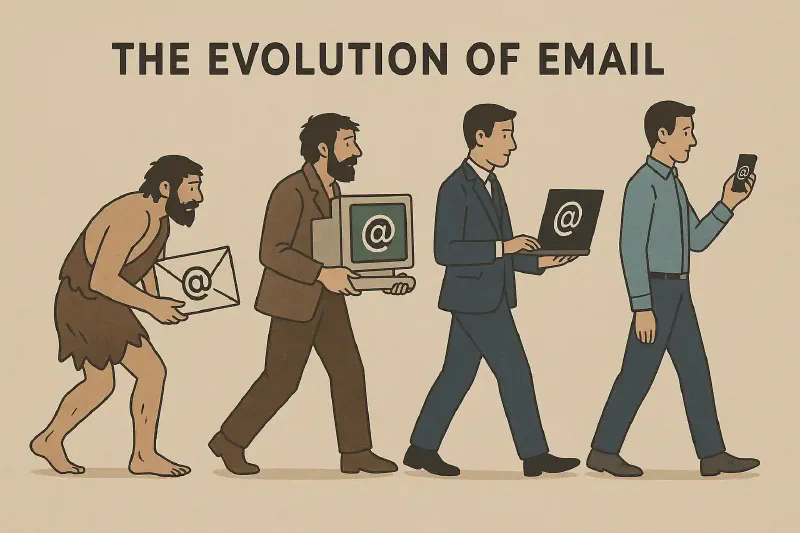The Evolution of Email

Email: The Original Internet Identity and Still the Most Ubiquitous Communication Tool
In 1971, a software engineer named Ray Tomlinson sent the first networked email across ARPANET, the precursor to the modern internet. That single act didn’t just invent a new messaging system—it introduced the now-iconic “@” symbol and laid the foundation for the digital communication revolution.
Fast forward over five decades, and email is no longer just a tool—it’s a cornerstone of modern life. What started as a simple way to send messages between computers has evolved into the most widely used and foundational form of communication on the internet.
Email is our digital home. It’s our address online. Nearly every interaction we have on the web from signing up for services to resetting passwords to receiving official communications starts with an email address.
People use email to reach out to one another, casually or professionally. Businesses rely on it for marketing, customer service, and internal operations. Governments are increasingly adopting email as a formal channel to communicate with citizens, from tax notices to healthcare updates.
What’s often overlooked, though, is just how massive and decentralized this system really is.
And unlike most modern platforms, email is federated. No single company owns it. Anyone with a domain and an internet connection can host their own email server. That openness has made it resilient, accessible, and enduring in a way few technologies can claim.
But Now We’re at an Inflection Point
With the rapid rise of computer agents, AI copilots, and automated workflows, our relationship with email is beginning to change.
Email was originally designed for person-to-person communication. But today, it has evolved into something even more powerful. Many messages are now generated by systems, interpreted by software, and used to trigger automated workflows. The inbox has become more than just a personal space—it’s a dynamic stream of structured information, full of opportunities for smarter, faster, and more efficient interactions.
This shift demands that we rethink email, not just as a communication tool, but as an interface between humans and machines.
That’s where Parsel comes in.
Parsel helps you turn your inbox into a programmable interface. Whether you’re building workflows, parsing messages, or connecting email to your software systems, Parsel gives you powerful, flexible tools to make email work the way you need it to.
It’s time to move beyond the inbox. Explore what email can become at parsel.email.
Sincerely,
- Arvind
[email protected]